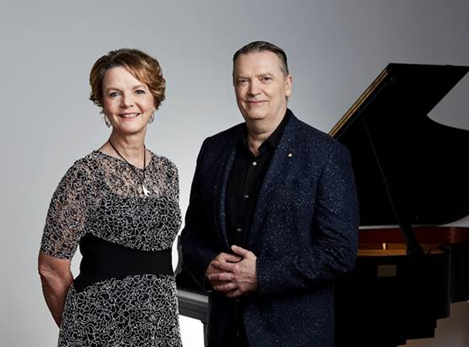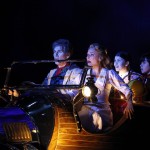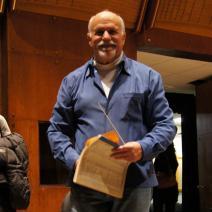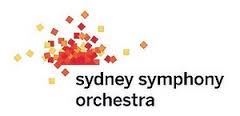The Story Behind Kingfisher – Songs For Halcyon
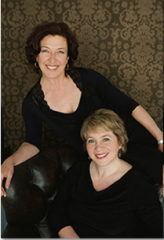
Receiving personalised presents from good friends is surely one of the best things about celebrating a birthday.
New music ensemble Halcyon celebrated its 15th birthday in 2013, with 21 new songs written especially for them by some of Australia’s finest songwriters. These songs have been crafted on to a new recording Kingfisher – Songs for Halcyon, released last month on the Tall Poppies label (TP236). For the project, founding members of Halcyon, soprano Alison Morgan and mezzo-soprano Jenny Duck-Chong were joined by five instrumentalist colleagues, flautist Laura Chislett-Jones, clarinettist Jason Noble, cellist Geoffrey Gartner and percussionists William Jackson and Joshua Hill.
Jenny Duck-Chong says the idea was conceived in 2012. “For Halcyon’s 15th anniversary in 2013 we wanted to do something special, similar to our young composers project back in 2011, but with the better known composers we’d worked with over the years. We thought our 15th birthday would be the right opportunity.”
Alison and Jenny wrote to a number of composers with whom they had worked over the decade and a half of their music making as Halcyon, inviting each to write a song to commemorate the milestone. “We didn’t expect to get much of a response” recalls Jenny, “but almost everybody wrote back wanting to be included. We felt the need for some direction and unifying theme. The obvious thing was to use the word ‘halcyon’. ”
For the duo, ‘halcyon’ has numerous associations. “There is the mythical bird said to calm the wind and waves, there is the Australasian kingfisher with brightly coloured plumage, the idea of peace and tranquility in past times, the idea of the ocean itself and its many moods and the two us who make up Halcyon. The composers were free to draw on any of these ideas – we didn’t want to be so directive that they couldn’t indulge their own creativity” she adds.
“At the end of 2013 we were able to show off a few pieces and celebrate at the Museum of Contemporary Art which served as a pre-launch of Kingfisher. In March 2014, we performed 2 concerts where we presented all 21 pieces across 2 weekends, supported by a grant from the Australia Council.”
Kingfisher was always intended to be a recording project that would leave a lasting legacy. The cover of the CD is a photograph of kingfisher feathers by Italian photographer Lorenzo Cortelletti. “Kingfishers – they dart, they’re fast, they’re acrobatic – a lot of what they do is related to their speed and it reminded us of what we do vocally” observes Jenny. “That energy and movement and colour and virtuosity…..it’s not a static bird – it has a lot of energy even when it’s sitting still you’re wondering when it’s going to move.”
Kingfisher contains a diversity of writing styles, but an overriding feature, comments Jenny, is that all the composers love to write for voice and understand how to complement the voice. “There is something inherent in their love of language and their love of the human voice that is in every single piece, despite their diversity. There is a lot of very poetic language and a lot of beauty too – and this one of the reasons we love contemporary vocal music. It contains not just the sounds of the human voice, but the joy of language. The voice is often much more approachable to people than instrumental music.”
The songs of Kingfisher suit a variety of moods. There are moments in all of them that Jenny finds appealing. However, it is the “incredibly dangerous” moments of singing completely alone, unaccompanied that she finds most fascinating. “A lot of the songs are duos because that’s what we do together but each composer has done it very differently. We enjoy so many of these pieces because we have relationships with the composers and the songs have emerged from other conversations, other pieces and other experiences that inhabit each one which makes each song special in a different way.”
The words to the songs are taken from sources as varied as the songs themselves. “Some composers wrote their own text, others, like Graham Hair used text by James Joyce which is a challenge to set; Elliot Gyger found a piece of Danish poetry that he really liked and translated prior to setting it; Stephen Adams took a piece of Turkish poetry – it’s only a tiny fragment of text but it has depth and layers of meaning for him. The words to Gillian Whitehead’s song All One Water is by a poetry group which worked together, so it’s by one major poet, Clare Beynon augmented by other poets. The whole piece is actually a collective poem which is quite an unusual idea. There are poems by Walt Whitman, Emily Dickinson and Kathleen Raine; Andrew Schultz, Rosalind Page and Nicholas Vines were the only three who wrote their own texts.”
Was it all smooth sailing? “All the composers ran the text past us first. We were very happy with these and there was no debate on any of it. What the project did prove is that composers are as varied in their habits as everyone else. Although we set a deadline of August, we had some songs in by May. There were others whom we were still chasing the week before the concert – which is probably typical when you put together 21 people. Some composers wanted to work alongside us, being more directive and others just presented us with the finished product. It’s as much about personality as anything else and that’s another reason why it’s an interesting collection.”
For Alison and Jenny, Kingfisher- Songs for Halcyon is much more than just a celebration of 15 years of musical partnership. It is a testament to their relationships with the composers and a celebration of Australian contemporary music . “These composers generously gave us the songs as a birthday gift so we’re very pleased to be able to have this CD that we can now give back to them and make their music much better known” says Jenny. Indeed, the relatively small musical forces required to perform the songs of Kingfisher make them more easily performed. ” Hopefully these pieces will not just have a life through us but will take on more lives because they are easy enough for people to pick up and learn and programme in other places. It’s also an important source of Australian content for examinations and Eisteddfods – and they’re all quite short ” comments Jenny.
Being songs that require contemporary vocal technique, Jenny has every intention of drawing on Kingfisher in her work with singers. How does that differ to traditional classical vocal technique? “There is certainly contemporary technique which is hard for the voice, which is uncomfortable. We have steered away from that in a lot of respects. What we want to do is to use our voices as the instruments they are – that means that we don’t use extended techniques that are harsh on the voice. We’re not afraid of rhythm and pitch and being completely being fearless and acrobatic. It’s a bit like being a tightrope walker – there is a high degree of danger but when it comes off it’s really exciting!”
Shamistha de Soysa for SoundsLikeSydney©


